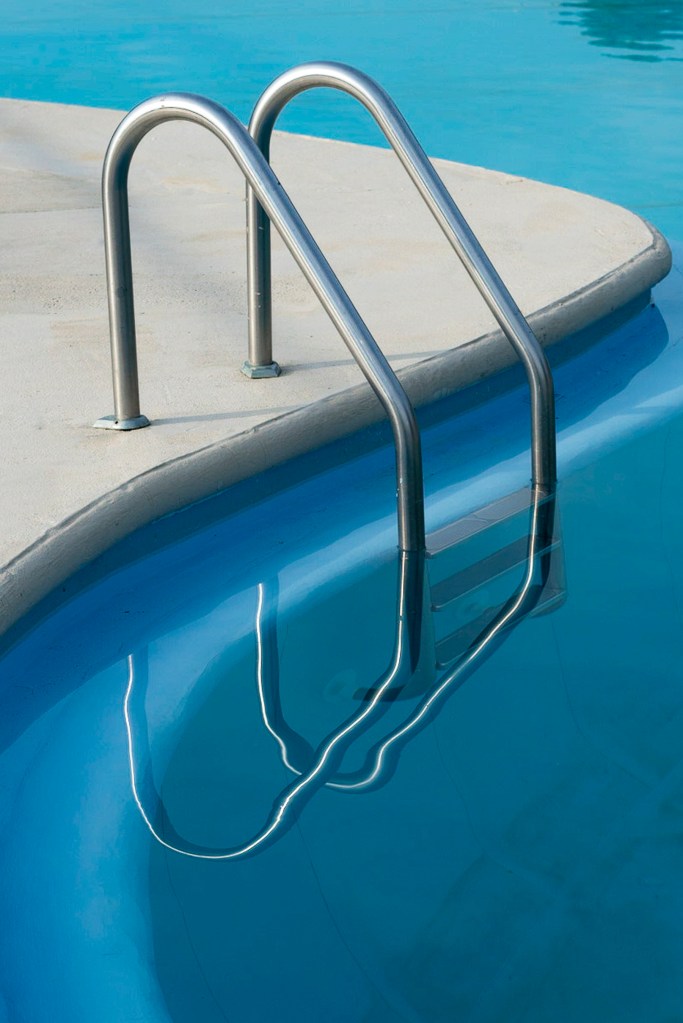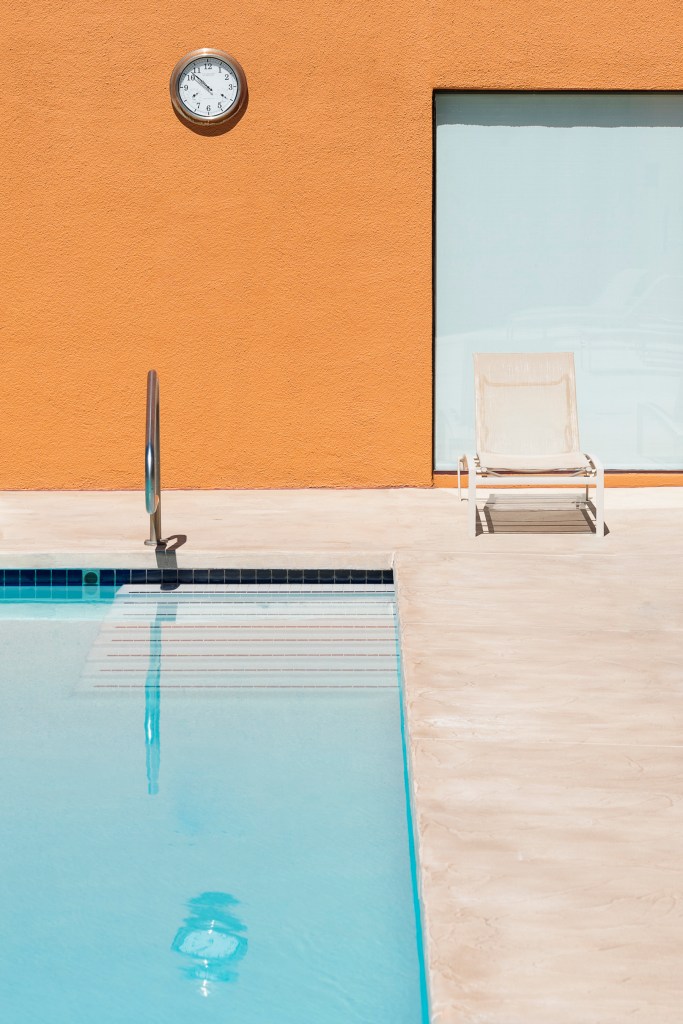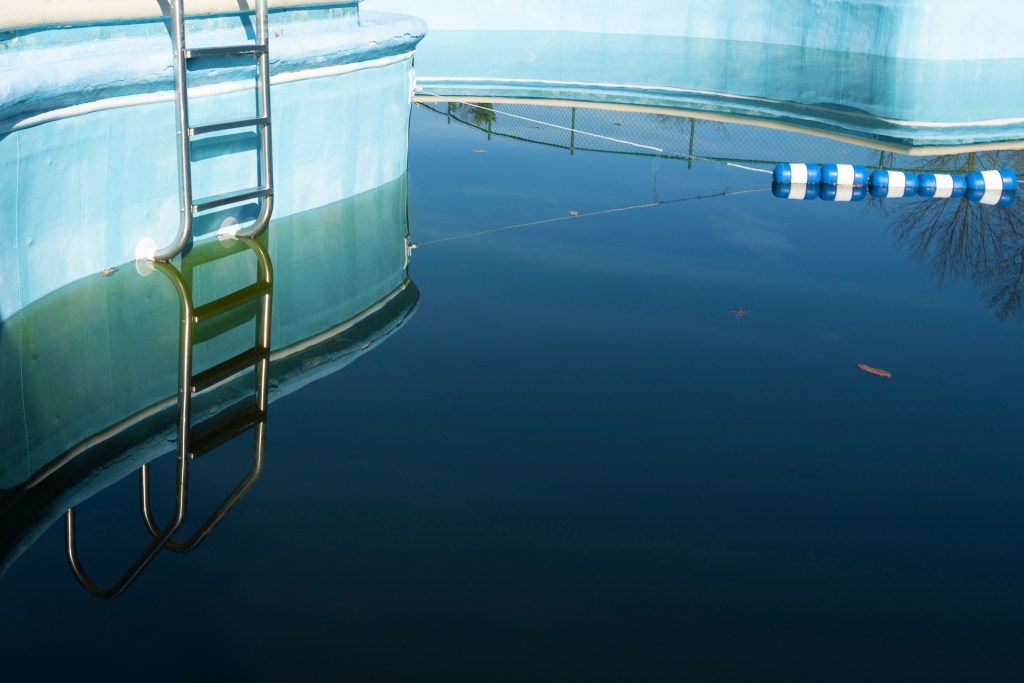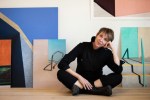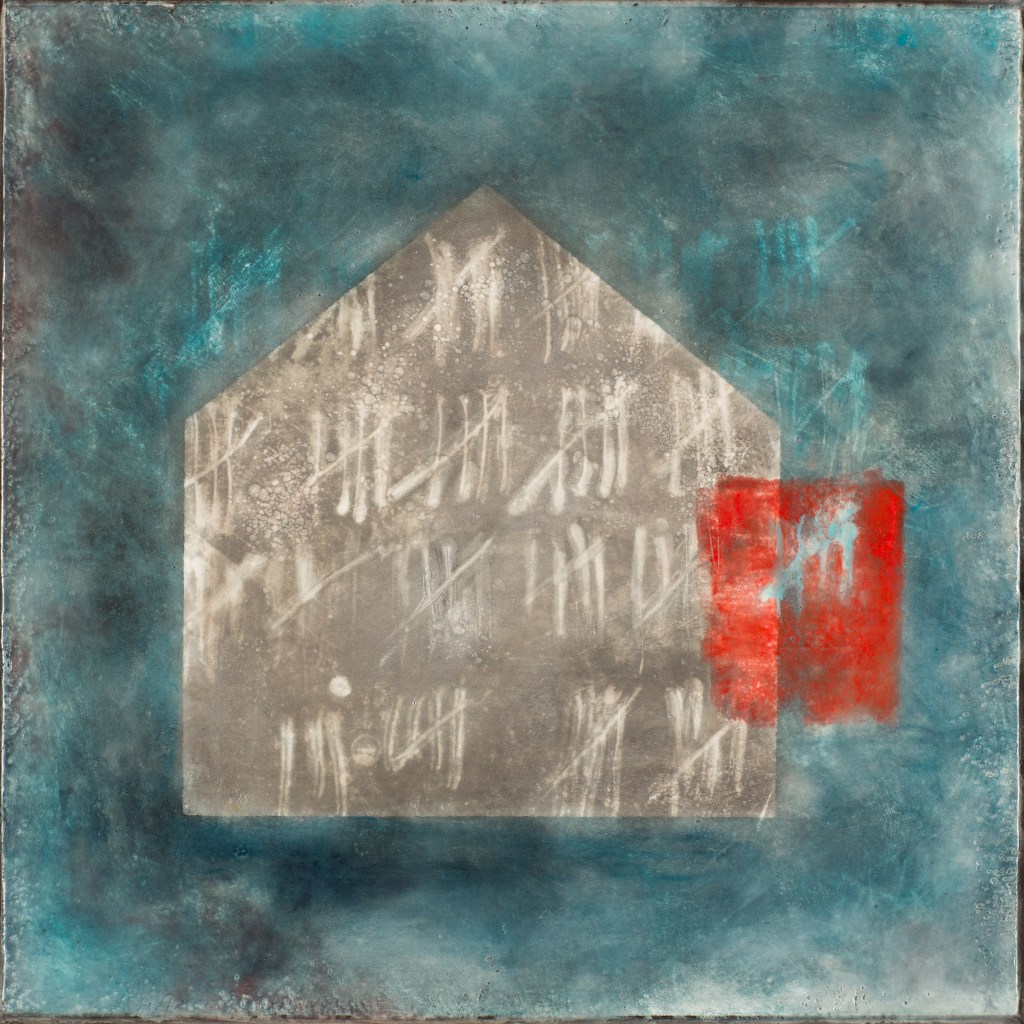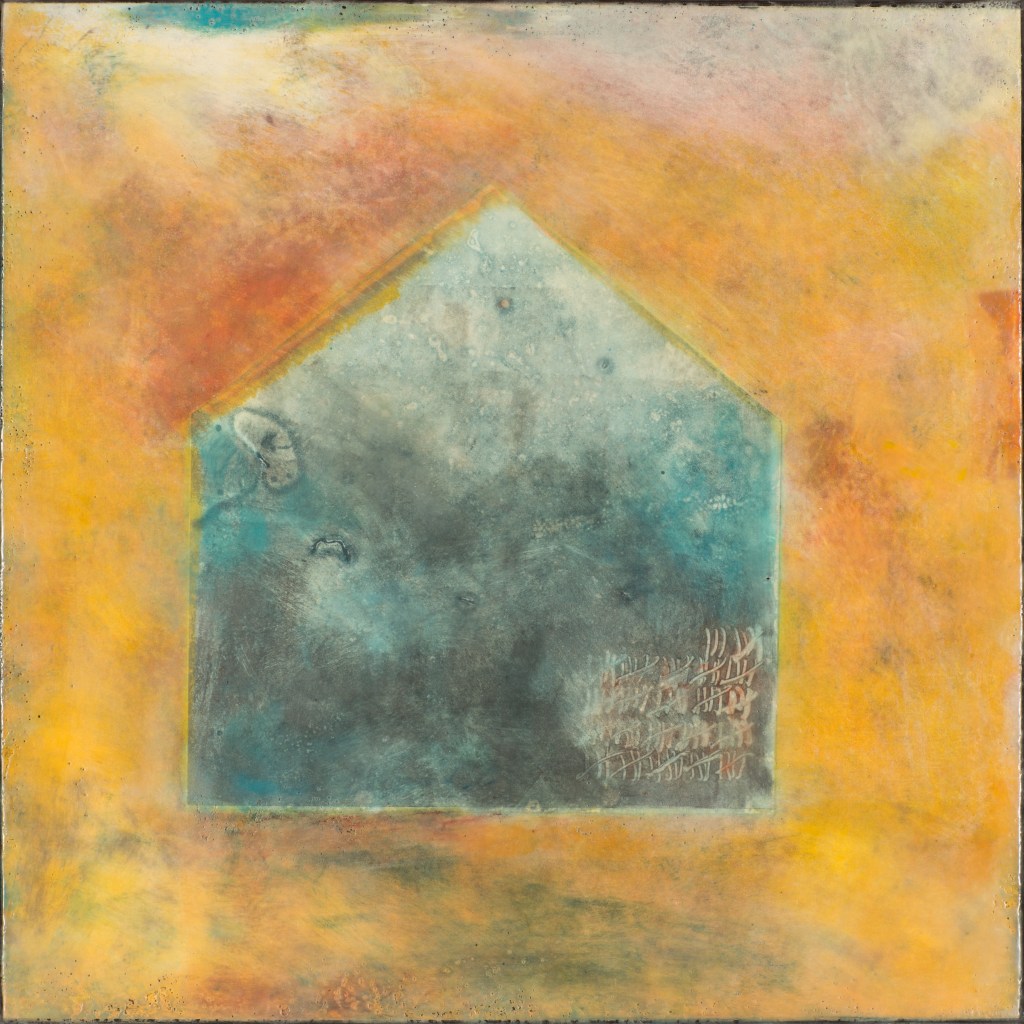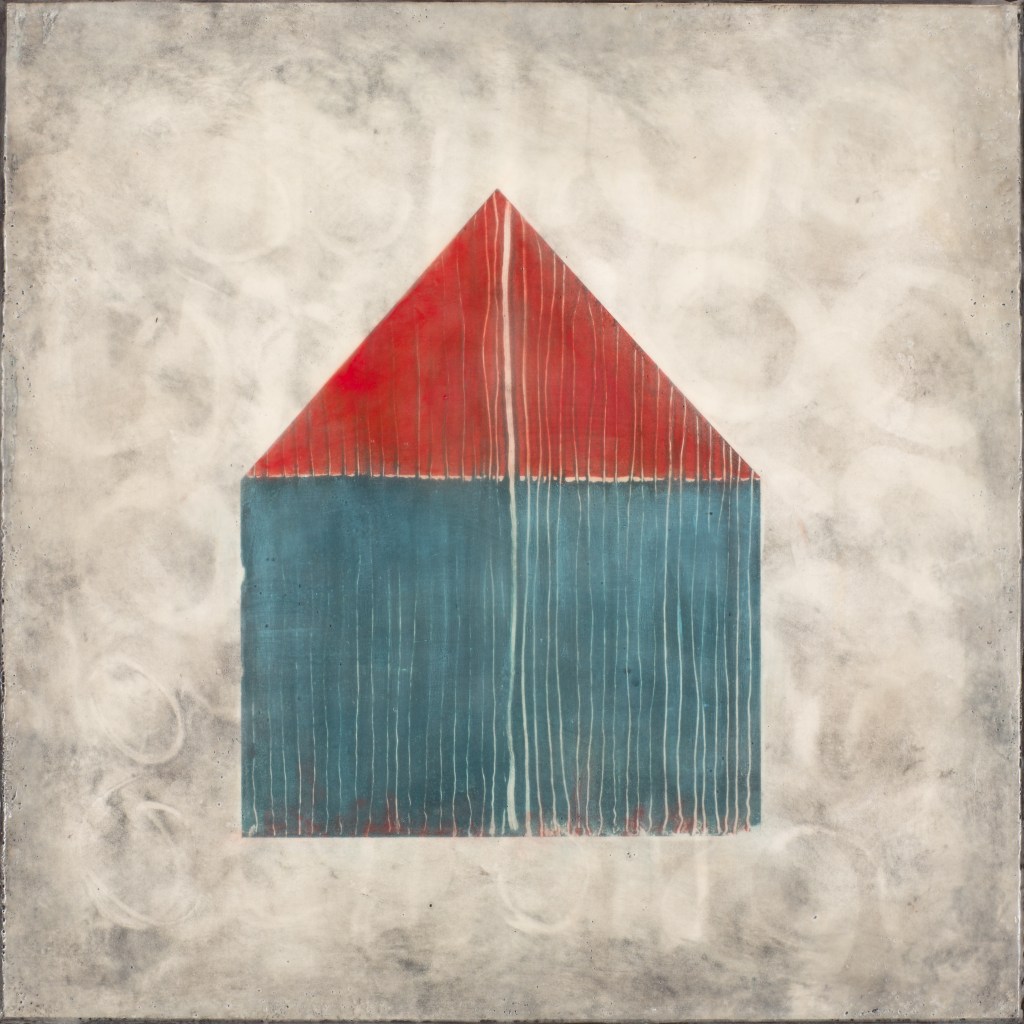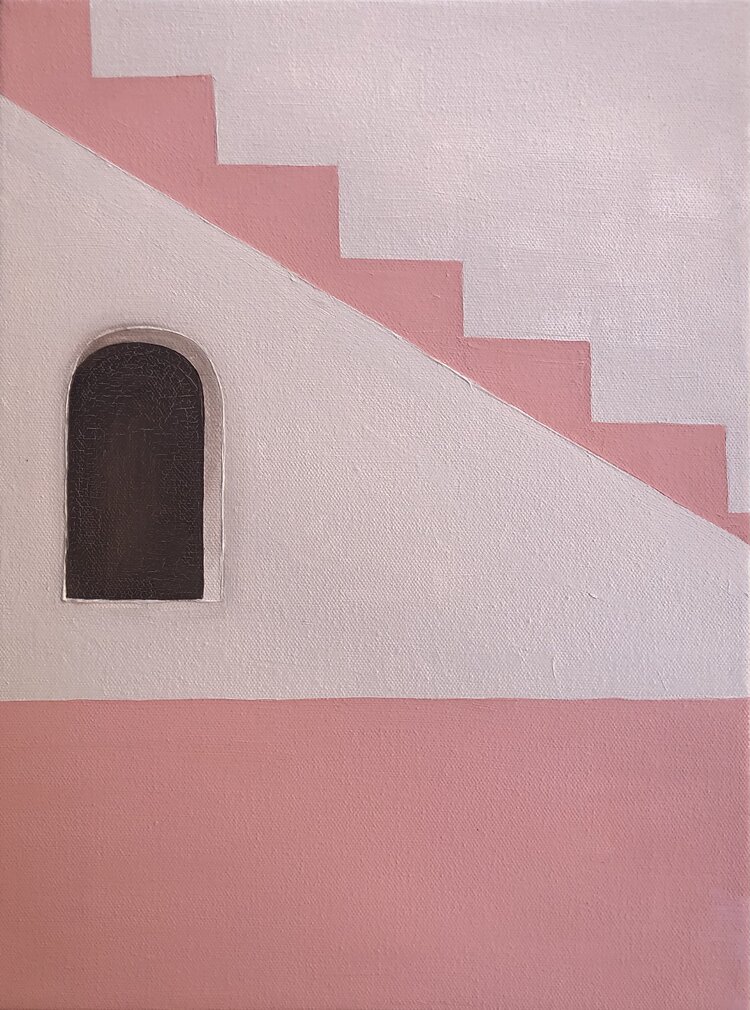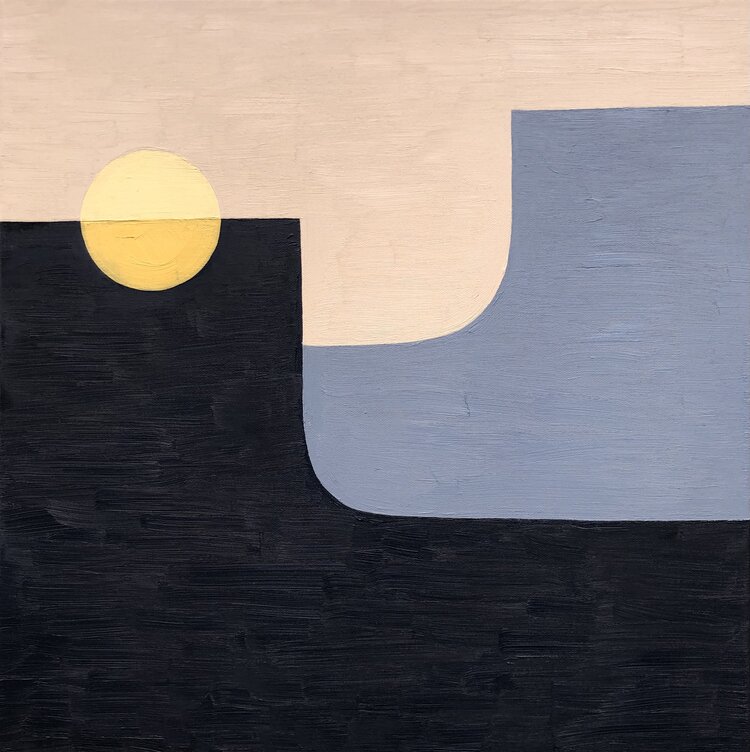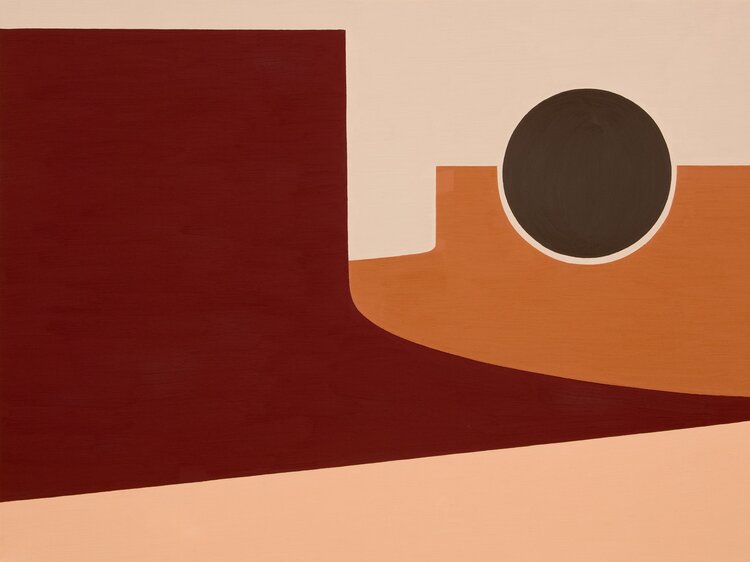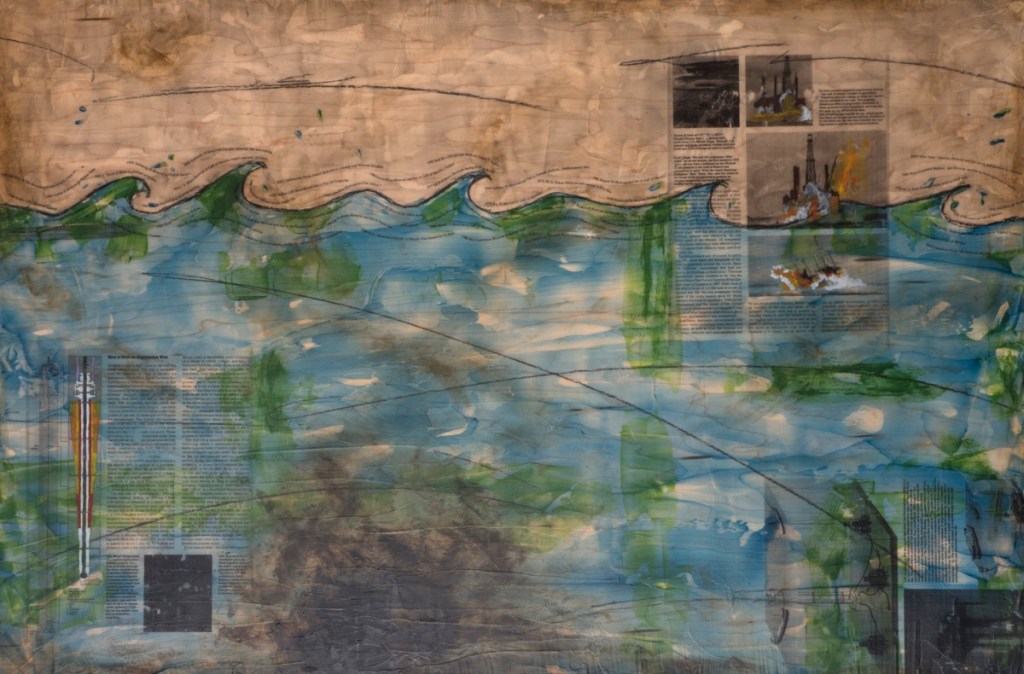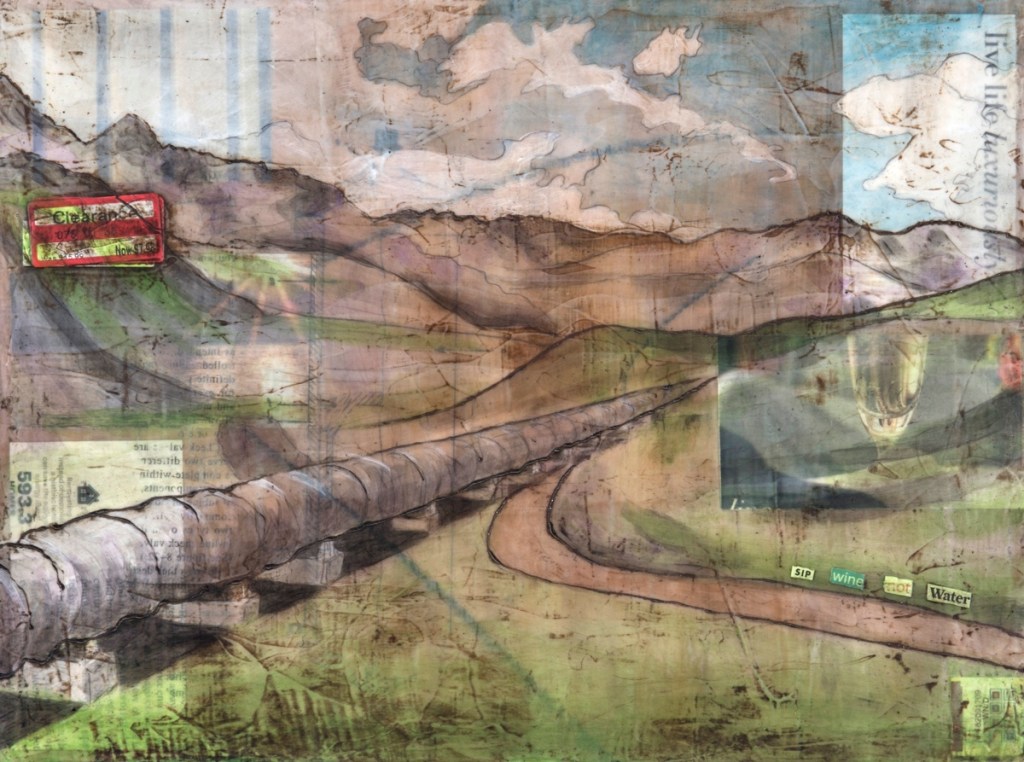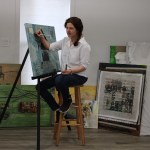Can a site hold memory, or does it simply activate memory? In this section, each artist explores a specific site as a vessel for examining experiences.
Natalie Christensen
The first pool I remember was the one I fell into as a small child. It was at an apartment complex that my young parents lived in. I recall falling in, opening my eyes, and seeing the color of the water and the reflection of sunlight shimmering in my field of vision. My mother pulled me out. I was around four years old. Eventually I became a good enough swimmer and spent the summers of my childhood and adolescence in any pool I could find.
My parents were divorced by the time I was eight years old and I spent every other weekend with my dad. Back then he lived in apartment complexes, some of which had pools. My father would let my brother and me swim for hours. During the winter he would take us to hotels that had indoor pools. These stays with him helped us avoid the sense of loss.
My father’s business endeavors were prone to sudden changes. When times were good, he lived in luxurious homes. The best ones had pools. But when the tides would turn, the moves came abruptly. There were 11 homes in 10 years. And sometimes the pools went dry.
I came to learn that the presence of a pool was a distraction from how impermanent things actually were. Underneath, there loomed an impending sense that everything could be lost. Stable could quickly become unstable, and suddenly we were in over our heads. Yet the pool was always seductive. There was a comfort in the stillness of its waters, albeit a calm that couldn’t be trusted.
Now, I look at pools as windows into my past and insights into my present. Beyond their surfaces, the depths of my discoveries are seemingly infinite.
Multiple award-winning photographer Natalie Christensen seeks the sublime in ordinary settings. Career highlights: U.S./international museum/gallery exhibitions; feature and cover art Minimalism in Photography (teNeues, 2022); 007 – Natalie Christensen (Setanta Books, London); UAE Embassy culture tour delegate; Artist-in-Residence Chateau d’Orquevaux, France invitee; permanent collections; and features in numerous fine art publications.
Catherine Eaton Skinner
The image of home is a simple outline or shape of a house, much like I drew in early childhood, sans doors, windows and the smoking chimney.
The shape was developed with the upright triangle of the “Within Three Sides” series, adding below the next tantric shape of the square; the three lines of the triangle transform into the 5 lines of the house.
My home in which I grew up was occurring often in my dreams, distorted and unreal, but still recognizable. At the time I was introduced to The Poetics of Space, a 1958 book by Gaston Bachelard. “Bachelard applies the method of phenomenology to architecture basing his analysis not on purported origins but on lived experience of architecture.” (Wikipedia)
I was struck by the likening of the attic to the mind and spirit, reaching upward to the ether. The body of the house becomes the physical self. Then the basement symbolizes the darker side of the psyche, requiring a candle to explore those corners of the mind.
Catherine Eaton Skinner (Seattle/Santa Fe) illuminates the balance of opposites, reflecting mankind’s attempts at connection. Skinner has an extensive global museum/gallery exhibition history, including Pie Projects, Las Cruces Museum: Branigan Cultural Center and upcoming International Art Museum of America. 150+ publications have featured her work. Radius Books published her monograph 108.
Mia Di Santo
“SPACE- REPRESENTS SANITY, NOT A LIFE PURIFIED, DULL, OR “SPACED OUT” BUT ONE THAT MIGHT ACCOMMODATE INTELLIGENTLY ANY IDEA OR SITUATION…WE FILL UP SPACE AS IF IT WERE A PIE SHELL, WITH THINGS WHOSE OPACITY FURTHER OBSTRUCTS OUR ABILITY TO SEE WHAT IS ALREADY THERE.” – GRETEL EHRLICH, THE SOLACE OF OPEN SPACES
My paintings are a visual exploration of the push-pull relationship between my fast-paced urban environment and the remote, open landscapes I long for. I aim for simplicity in my painting, abstract landscapes reduced to uncomplicated shapes. There is natural minimalism to the Southwest that cannot be replicated with the manufactured minimalism of urban design, but through my art, I attempt to understand the way the two interact with one another in relation to space and time.
I paint slowly and methodically, working to recapture a sense of time lost in the digital age. I am nostalgic for a childhood spent staring out the window of the family minivan as we traveled back and forth through the deserts of the Four Corners. I learned to savor those countless hours spent in the car tracing the outlines of rock formations and mountains, memorizing the way their silhouetted shapes rested against the limitless desert sky. After seven years in the Midwest though, I find the serene, lush landscapes of the prairie inspiring my more recent work.
Mia Di Santo is a painter and writer currently based in Chicago. Di Santo draws great inspiration from the topography of the American Southwest.
Sam Marroquin
Investigating and exposing truth in current and historic events, I examine the transmission and dissemination of information and the ways in which we are distracted from important issues. We are subject to the constant and sophisticated manipulation of reality and the exclusion of significant topics by the news media. Using their power and influence, these agencies control whose voices are heard and the ways our stories are framed.
I document and uncover narratives of the marginalized and underrepresented. These points of view comprise our collective experience of fact and fiction. Revealing the truth of these stories becomes a way of looking at our past as we build for future generations. My exploration into our convoluted systems is often shocking and disturbing.
I work intently, building layer upon layer of images, text, visual information, found objects, and paint. Carefully selected images compose my work along with metal, wire, bits of plastic, mesh, tags, product packaging, and other castoff items from my collection of found materials.
Sam Marroquin has shown her artwork in many venues including The Jason McCoy Gallery, NY, Washington State University, and Southern Oregon University. She earned her BA at The University of Washington, Seattle, and her MA from Eastern Washington University. She lives and teaches art in southwestern Washington State.

